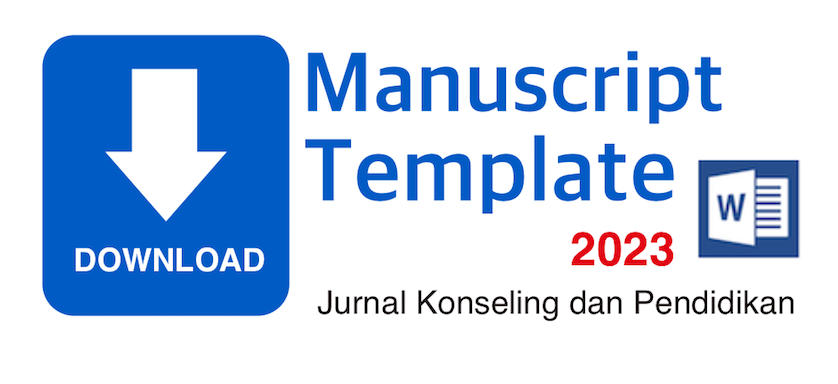Multimedia development to improve character analysis thinking skills through value-based learning approaches
 ),
), (1) STKIP 11 April Sumedang
 Corresponding Author
Corresponding Author
DOI : https://doi.org/10.29210/154000
Full Text:
 Language : en
Language : en
Abstract
Keywords
References
Artigue, M., & Blomhøj, M. (2013). Conceptualizing inquiry-based education in mathematics. ZDM - International Journal on Mathematics Education, 45(6), 797–810. https://doi.org/10.1007/s11858-013-0506-6
Bodemer, D., & Dehler, J. (2011). Group awareness in CSCL environments. Computers in Human Behavior, 27(3), 1043–1045. https://doi.org/10.1016/j.chb.2010.07.014
Bravo, C., Duque, R., & Gallardo, J. (2013). A groupware system to support collaborative programming: Design and experiences. Journal of Systems and Software, 86(7), 1759–1771. https://doi.org/10.1016/j.jss.2012.08.039
Bryman, A. (2014). June 1989 and beyond: Julia Brannen’s contribution to mixed methods research. International Journal of Social Research Methodology, 17(2), 121–131. https://doi.org/10.1080/13645579.2014.892653
Chen, C. M., & Tsai, Y. N. (2012). Interactive augmented reality system for enhancing library instruction in elementary schools. Computers and Education, 59(2), 638–652. https://doi.org/10.1016/j.compedu.2012.03.001
Chin, K. Y., Hong, Z. W., Huang, Y. M., Shen, W. W., & Lin, J. M. (2016). Courseware development with animated pedagogical agents in learning system to improve learning motivation. Interactive Learning Environments, 24(3), 360–381. https://doi.org/10.1080/10494820.2013.851089
de Barba, P. G., Kennedy, G. E., & Ainley, M. D. (2016). The role of students’ motivation and participation in predicting performance in a MOOC. Journal of Computer Assisted Learning, 32(3), 218–231. https://doi.org/10.1111/jcal.12130
Doerr, H. M., & Lesh, R. (2011). Models and Modelling Perspectives on Teaching and Learning Mathematics in the Twenty-First Century. 247–268. https://doi.org/10.1007/978-94-007-0910-2_26
Essel, H. B., Osei-poku, P., & Opoku-asare, N. A. (2016). Self-Paced Interactive Multimedia Courseware: A Learning Support Resource for Enhancing Electronic Theses and Dissertations Development. Journal of Education and Practice, 7(12), 74–84.
Järvelä, S., & Hadwin, A. F. (2013). New Frontiers: Regulating Learning in CSCL. Educational Psychologist, 48(1), 25–39. https://doi.org/10.1080/00461520.2012.748006
Kessler, G., Bikowski, D., & Boggs, J. (2012). Collaborative writing among second language learners in academic web-based projects. Language Learning and Technology, 16(1), 91–109.
Kolb, S. M. (2012). Grounded Theory and the Constant Comparative Method : Valid Research Strategies for Educators. Journal of Emerging Trends in Educational Research and Policy Studies, 3(1), 83–86. Retrieved from http://jeteraps.scholarlinkresearch.com/articles/Grounded Theory and the Constant Comparative Method.pdf
Krupat, E., Sprague, J. M., Wolpaw, D., Haidet, P., Hatem, D., & O’Brien, B. (2011). Thinking critically about critical thinking: Ability, disposition or both? Medical Education, 45(6), 625–635. https://doi.org/10.1111/j.1365-2923.2010.03910.x
Larson, R. W., & Rusk, N. (2011). Intrinsic Motivation and Positive Development. In Advances in Child Development and Behavior (1st ed., Vol. 41). https://doi.org/10.1016/B978-0-12-386492-5.00005-1
Linder, S. M., Powers-Costello, B., & Stegelin, D. A. (2011). Mathematics in Early Childhood: Research-Based Rationale and Practical Strategies. Early Childhood Education Journal, 39(1), 29–37. https://doi.org/10.1007/s10643-010-0437-6
Markram, B. H. (2012). transform neuroscience and medicine and reveal new ways of making more powerful computers It ’ s time to change the way we study the brain . 306(June), 50–55.
Philip, T. M., Way, W., Garcia, A. D., Schuler-Brown, S., & Navarro, O. (2013). When educators attempt to make ‘community’ a part of classroom learning: Thedangers of (mis)appropriating students’ communities into schools. Teaching and Teacher Education, 34, 174–183. https://doi.org/10.1016/j.tate.2013.04.011
Piaw, C. Y. (2014). Effects of Gender and Thinking Style on Student’s Creative Thinking Ability. Procedia - Social and Behavioral Sciences, 116, 5135–5139. https://doi.org/10.1016/j.sbspro.2014.01.1087
Schmidt, K., & Bannon, L. (2013). Constructing CSCW: The first quarter century. Computer Supported Cooperative Work: CSCW: An International Journal, 22(4–6), 345–372. https://doi.org/10.1007/s10606-013-9193-7
Wallace, J. R., Oji, S., & Anslow, C. (2017). Technologies, Methods, and Values. Proceedings of the ACM on Human-Computer Interaction, 1(CSCW), 1–18. https://doi.org/10.1145/3134741
Yilmaz, D., Tekkaya, C., & Sungur, S. (2011). The Comparative effects of prediction/discussion-based learning cycle, conceptual change text, and traditional instructions on student understanding of genetics. International Journal of Science Education, 33(5), 607–628. https://doi.org/10.1080/09500691003657758
 Article Metrics
Article Metrics
 Abstract Views : 373 times
Abstract Views : 373 times
 PDF Downloaded : 135 times
PDF Downloaded : 135 times
Refbacks
- There are currently no refbacks.

This work is licensed under a Creative Commons Attribution 4.0 International License.




